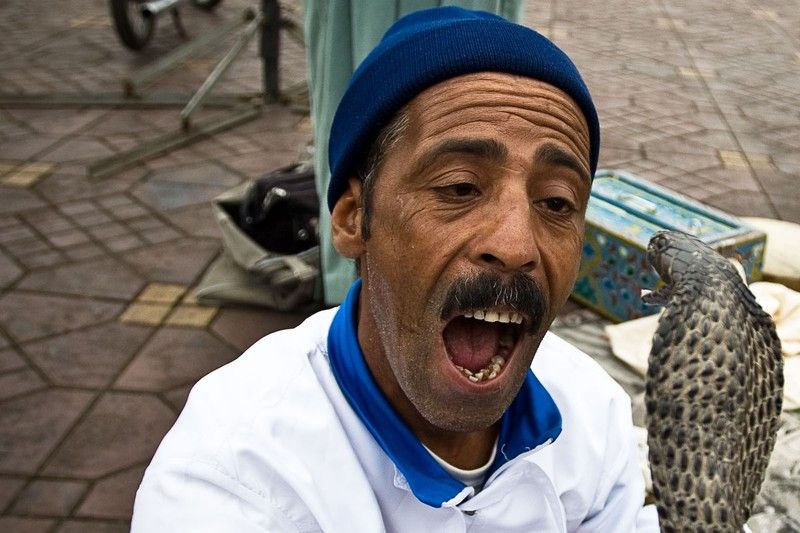|
|
Snake Magician, Morocco, Marrakech
|
The treatment for a snakebite is as variable as the bite itself. The most common and effective method is through antivenom (or antivenin), a serum made from the venom of the snake. Some antivenom is species specific (monovalent) while some is made for use with multiple species in mind (polyvalent). In the United States for example, all species of venomous snakes are pit vipers, with the exception of the coral snake. To produce antivenom, a mixture of the venoms of the different species of rattlesnakes, copperheads, and cottonmouths is injected into the body of a horse in ever-increasing dosages until the horse is immunized. Blood is then extracted from the immunized horse; the serum is separated and further purified and freeze-dried. It is reconstituted with sterile water and becomes antivenom. For this reason, people who are allergic to horses are more likely to suffer an allergic reaction to antivenom. Antivenom for the more dangerous species (such as mambas, taipans, and cobras) is made in a similar manner in India, South Africa, and Australia, although these antivenoms are species-specific.
Snake charmers
In some parts of the world, especially in India, snake charming is a roadside show performed by a charmer. In such a show, the snake charmer carries a basket that contains a snake that he seemingly charms by playing tunes from his flutelike musical instrument, to which the snake responds. Snakes lack external ears, though they do have internal ears, and respond to the movement of the flute, not the actual noise.
|
|









